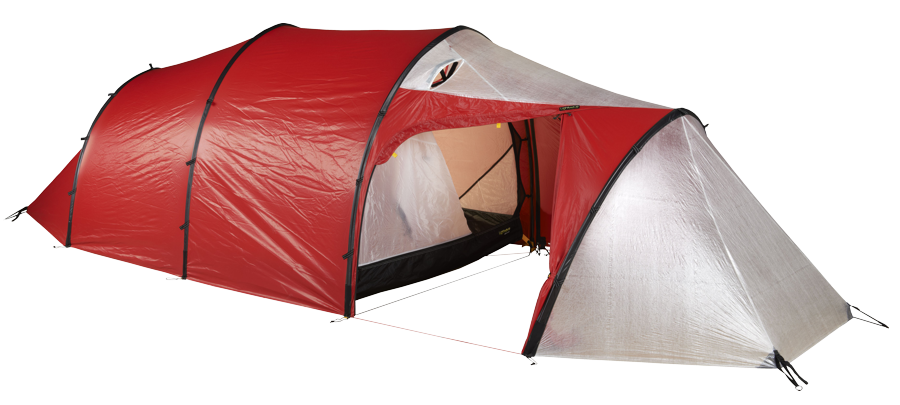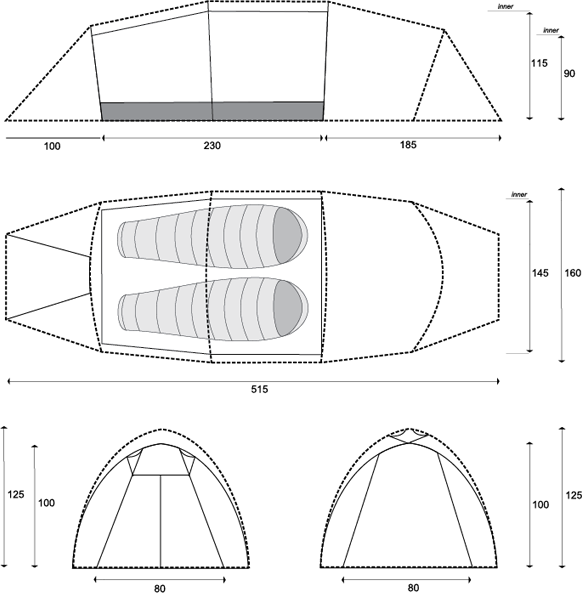Flysheet
51 g/m2, 50d nylon 6.6 ripstop, silicone-coated on both sides, 7000 mm hydrostatic head,
18 g/m2, Dyneema/nylon non-woven fabric, 10,000 mm hydrostatic head.
The arctic flysheet is made from nylon 6.6 with a yarn thickness of 45 denier. Almost twice as strong as fabrics woven from lighter yarns, this is the best choice for any serious mountain, expedition or polar tent. The strength of the arctic flysheet is further assured by using only high-tenacity nylon 6.6, which has a higher tensile strength than normal nylon. Finally, the fabric is silicone-coated on both sides for water resistance to a hydrostatic head of 7000 mm.
The arctic uses panels of Cuben fabric in the porch areas to reduce weight, increase strength and allow some light to enter. Cuben is a fabric that was developed for the sails of the America Cup yachts. At almost a third of the weight of the 45d nylon, it has more than twice the strength. The downside is its cost – well over five times that of conventional nylon fabrics per square metre!
Groundsheet
120 g/m2, 100d nylon taffeta, TPU laminated
10000 mm hydrostatic head, factory-taped seams
The arctic groundsheet is made from a 40-denier nylon ripstop with a laminated thermo-plastic polyurethane (TPU) coating. TPU coatings have greater bonding durability (to the substrate fabric) and better abrasion resistance than conventional liquid-applied PU coatings.
Inner canopy
30g/m2, 20d nylon 6.6 ripstop, DWR treated
Poles
DAC 10.0 mm Featherlight NSL poles
The t25 arctic uses 9.60 mm DAC Featherlight NSL poles. Quite simply, these are the most reliable poles we know.
Pegs
Lightning pegs, 11 g each, square section
Wavelight pegs, 12 g each, corkscrew design
Titanium V-pegs, 10 g each, V-shape
Pegs are a vital component of every tent. Tunnel tents are of course completely dependent upon solid anchors at front and rear, but a self-supporting geodesic, too, needs to be prevented from blowing away in the breeze. Lightwave offers a range of different pegs with the t25 arctic to ensure they can be secured in all ground conditions.
Guylines
2 mm Dyneema/polyester, 3 m length, mini-Linelok adjusters
Arctic tents come with our Dyneema guylines, a 2 mm blend of Dyneema and polyester with a breaking strain of 180 kg. Phenomenally light, they also absorb no water so won’t freeze up in winter. The Linelok adjusters mean they are easy to tension, even with gloves on.






